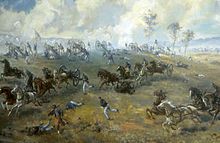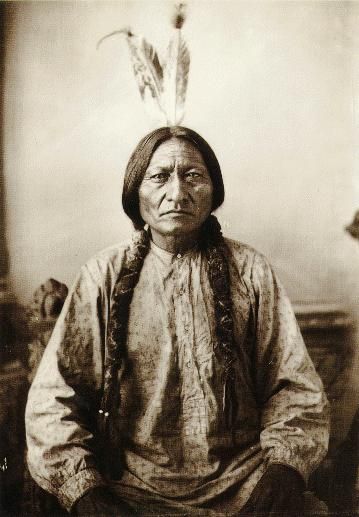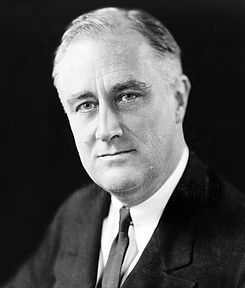On this day in 1998, a diplomatic conference adopts the Rome Statute of the International Criminal Court, establishing a permanent international court to prosecute individuals for genocide, crime against humanity, war crimes, and the crime of aggression.
 The Rome Statute of the International Criminal Court (often referred to as the International Criminal Court Statute or the Rome Statute) is the treaty that established the International Criminal Court (ICC). It was adopted at a diplomatic conference in Rome on 17 July 1998 and it entered into force on 1 July 2002. As of March 2011, 114 states are party to the statute. Grenada will become the 115th state party on 1 August 2011. A further 34 states have signed but not ratified the treaty. Among other things, the statute establishes the court’s functions, jurisdiction and structure.
The Rome Statute of the International Criminal Court (often referred to as the International Criminal Court Statute or the Rome Statute) is the treaty that established the International Criminal Court (ICC). It was adopted at a diplomatic conference in Rome on 17 July 1998 and it entered into force on 1 July 2002. As of March 2011, 114 states are party to the statute. Grenada will become the 115th state party on 1 August 2011. A further 34 states have signed but not ratified the treaty. Among other things, the statute establishes the court’s functions, jurisdiction and structure.
Under the Rome Statue, the ICC can only investigate and prosecute in situations where states are unable or unwilling to do so themselves. Thus, the majority of international crimes continue to go unpunished unless and until domestic systems can properly deal with them. Therefore, permanent solutions to impunity must be found at the domestic level.
History
Following years of negotiations aimed at establishing a permanent international tribunal to prosecute individuals accused of genocide and other serious international crimes, such as crimes against humanity, war crimes and the recently defined crimes of aggression, the United Nations General Assembly convened a five-week diplomatic conference in Rome in June 1998 “to finalize and adopt a convention on the establishment of an international criminal court”. On 17 July 1998, the Rome Statute was adopted by a vote of 120 to 7, with 21 countries abstaining.[5] The seven countries that voted against the treaty were Iraq, Israel, Libya, the People’s Republic of China, Qatar, the United States, and Yemen.
On 11 April 2002, ten countries ratified the statute at the same time at a special ceremony held at the United Nations headquarters in New York City, bringing the total number of signatories to sixty, which was the minimum number required to bring the statue into force, as defined in Article 126. The treaty entered into force on 1 July 2002; the ICC can only prosecute crimes committed on or after that date. The statute was modified in 2010 after the Review Conference in Kampala, Uganda, but the amendments to the statute that were adopted at that time are not effective yet.
The Rome Statute is the result of multiple attempts for the creation of a supranational and international tribunal. At the end of 19th century, the international community took the first steps towards the institution of permanent courts with supranational jurisdiction. With the Hague International Peace Conferences, representatives of the most powerful nations made an attempt to harmonize laws of war and to limit the use of technologically advanced weapons. After World War I and even more after the heinous crimes committed during World War II, it became a priority to prosecute individuals responsible for crimes so serious that needed to be called “against humanity”. In order to re-affirm basic principles of democratic civilisation, the alleged criminals were not executed in public squares or sent to torture camps, but instead treated as criminals: with a regular trial, the right to defense and the presumption of innocence. The Nuremberg trials marked a crucial moment in legal history, and after that, some treaties that led to the drafting of the Rome Statute were signed.
UN General Assembly Resolution n. 260 9 December 1948, the Convention on the Prevention and Punishment of the Crime of Genocide, was the first step towards the establishment of an international permanent criminal tribunal with jurisdiction on crimes yet to be defined in international treaties. In the resolution there was a hope for an effort from the Legal UN commission in that direction. The General Assembly, after the considerations expressed from the commission, established a committee to draft a statute and study the related legal issues. In 1951 a first draft was presented; a second followed in 195] but there were a number of delays, officially due to the difficulties in the definition of the crime of aggression, that were only solved with diplomatic assemblies in the years following the statute’s coming into force. The geopolitical tensions of the Cold War also contributed to the delays.
Trinidad and Tobago asked the General Assembly in December 1989 to re-open the talks for the establishment of an international criminal court and in 1994 presented a draft Statute. The General Assembly created an ad hoc committee for the International Criminal Court and, after hearing the conclusions, a Preparatory Committee that worked for two years (1996-1998) on the draft. Meanwhile, the United Nations created the ad hoc tribunals for the former Yugoslavia (ICTY) and for Rwanda (ICTR) using statutes-and amendments due to issues raised during pre-trial or trial stages of the proceedings-that are quite similar to the Rome Statute.
During its 52nd session the UN General Assembly decided to convene a diplomatic conference for the establishment of the International Criminal Court, held in Rome 15 June-17 July 1998 to define the treaty, entered into force on 1 July 2002.
THE GREAT COMET OF 1997. Above, the bright head of comet Hale-Bopp, called the coma, is pointed towards the Sun. The coma is composed of dust and gas, masking the solid nucleus of the comet made up of rock, dust and ice. Photo taken by Jim Young at NASA’s Jet Propulsion Laboratories Table Mountain Observatory in March 1997.




 On this day in 1848, a two-day
On this day in 1848, a two-day  Roosevelt was born January 30, 1882, in Hyde Park, New York, and went on to serve as a New York state senator from 1911 to 1913, assistant secretary of the Navy from 1913 to 1920 and governor of New York from 1929 to 1932. In 1932, he defeated incumbent Herbert Hoover to be elected president for the first time. During his first term, Roosevelt enacted his New Deal social programs, which were aimed at lifting America out of the Great Depression. In 1936, he won his second term in office by defeating Kansas governor Alf Landon in a landslide.
Roosevelt was born January 30, 1882, in Hyde Park, New York, and went on to serve as a New York state senator from 1911 to 1913, assistant secretary of the Navy from 1913 to 1920 and governor of New York from 1929 to 1932. In 1932, he defeated incumbent Herbert Hoover to be elected president for the first time. During his first term, Roosevelt enacted his New Deal social programs, which were aimed at lifting America out of the Great Depression. In 1936, he won his second term in office by defeating Kansas governor Alf Landon in a landslide.


Recent Comments